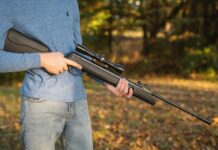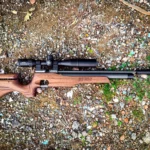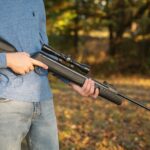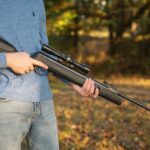If you have decided that shooting sports are now your thing or just want to purchase a handgun for self-defense, you must have already googled something like gun store near me or where to buy ammunition. Well, the whole topic of firearms possession is complex. But while ammo is not as regulated as firearms, you still must know federal and local ammo-related laws to avoid legal consequences. That is why you should read on, as this article provides an in-depth examination of the several legal issues surrounding ammunition. But before we begin, a little disclaimer – we are not lawyers, and the information given here is only for reference. Always check current gun and ammo legislation and consult professionals.
Table of Contents
Federal Ammunition Laws
Ammo regulation is a topic that has gained significant attention in recent years, particularly due to the increasing frequency of mass shootings in the United States. While guns are subject to federal restrictions, ammunition sales are generally less regulated. This disparity in oversight has led to concerns about how easy it is for individuals to stockpile large amounts of ammunition without raising any red flags.
Many laws apply only to guns and not to ammunition. For instance, firearms sellers must generally be licensed as dealers and retain records of gun sales, providing a paper trail that can be used by law enforcement to trace firearms involved in criminal activity. There are no such requirements for businesses selling ammo.
Another example is the requirement for people to show ID and pass a background check, intended to prevent those with criminal records or other disqualifying factors from obtaining firearms. However, typically, no such checks are required for ammunition purchases.
Furthermore, there is a law saying that handgun sales across state lines must be processed by a local seller, which helps maintain some level of control over the distribution of firearms. In contrast, ammunition can often be purchased online or across state lines with relative ease.
Lastly, high-volume handgun sales are regulated to prevent individuals from buying multiple guns at once. Ammunition, however, is not subject to the same restrictions, allowing people to amass significant stockpiles without any legal barriers.
As of 2024, federal ammo regulations mainly focus on banning sales to specific individuals and forbidding the production, import, and sale of armor-piercing rounds. Although federal law stops certain buyer categories from acquiring ammunition, it doesn’t mandate sellers to perform background checks, leaving room for prohibited purchasers to slip through.
By the way, there is a common misconception regarding green-tip 5.56 NATO ammunition closely related to .223 ammo. It has often been mistakenly labeled as armor-piercing due to its steel penetrator tip. However, it does not meet the legal definition of armor-piercing ammunition. Back in time, the purpose of the green tip was to signify a steel penetrator within the bullet (instead of a plain lead core), intended to enhance its performance against hard targets.

California & Other State Ammunition Laws
State laws regulating ammunition sales vary across the US, with some states implementing stricter regulations than others. For instance, six states – New York, California, Connecticut, Illinois, Massachusetts, and New Jersey – have enacted laws regulating ammo sales and requiring background checks. Other states impose ammunition access restrictions through age limits or by banning specific categories of potentially dangerous individuals.
Let us consider the laws of these six states. New York and California mandate point-of-sale background checks for ammunition purchases, ensuring that only eligible individuals can buy ammo. In Connecticut, state agencies issue ammunition certificates, which must be renewed every five years. Illinois takes a slightly different approach by requiring residents to obtain a Firearm Owners Identification (FOID) card to legally purchase or possess firearms and ammunition. Massachusetts necessitates residents to obtain a firearm permit or license to purchase ammunition. Lastly, New Jersey enforces strict regulations on handgun ammunition purchases. Residents are typically prohibited from acquiring any handgun ammo unless they present a valid firearm purchaser identification card or a permit to purchase a handgun.
Ammunition Serialization
For several years now, gun reform advocates have been discussing the implementation of ammunition serialization technology as a potential solution to improve firearm regulations. Ammunition serialization is a process that involves assigning unique identification numbers to individual cartridges, providing a traceable link between the ammunition and its point of sale. This system can help law enforcement track the origin of bullets used in criminal activities, potentially leading to the identification of firearms and their owners. By marking each round with a serial number, either on the casing or the bullet itself, investigators can more efficiently connect recovered ammunition to specific purchases, sellers, and buyers. While ammunition serialization has the potential to significantly improve the crime-solving process, it also raises concerns about logistical challenges, increased manufacturing costs, and potential privacy issues for lawful gun owners. Despite these concerns, the concept of ammunition serialization continues to be explored.











































